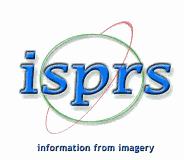|
Book Review 'International Study on Cost-Effective Earth Observation Missions', published by Taylor and Francis, October 2005, 160 pages including 21 tables, 10 figures and 3 appendices. Reviewed by: Prof John Trinder, The University of New South Wales, Australia, 1st Vice President ISPRS Small teams of about coordinates 25 people can develop and deliver small satellites on budget and within a tight schedule. While the cost per kilogram for small satellite launches will be higher than for large satellites, the overall cost will be much less. Chapter 2 (comprising only 1 ½ pages) briefly provides a definition of cost-efficient missions as Ce=C/B*f(R), where C is the cost to date, B is the budget cost and f(R) is a risk factor. After launch, Ce =C/E where E is the perceived earned value of the project. Subsequent chapters in the book consider how to reduce the factors B and f(R). Chapter 3 provides background material on major organisations which are undertaking research and development on Earth Observation (EO) satellite systems, in particular small satellites. Chapter 4, entitled 'Mission Cost Drivers', discusses the Space Segment under the headings of Payload, Spacecraft, Quality assurance. In these sections, a comparison is made between high cost, large payloads and platforms, with the recently technology developments which have led to low cost small satellite designs. 'The less ambitious payloads launched on small satellites can achieve:
The Ground Segment comprises the satellite communications, command and control, mission planning, data processing, archiving and dissemination. The emerging technologies for the ground segment such as automation and the internet are presented as opportunities and challenges for the future. The chapter then considers Mission Operations, Access to Space and Management and Organisation Approach. Chapter 5 (also very short) considers 'Cost Estimation and Modeling' under the headings of Definitions, Background and Current Best Practice, Comments and Examples. The chapter emphasises that successful execution of micro satellite missions have shown that 'small teams, as few different organisations as are required and limited budgets all contribute to innovative ways of lowering costs of satellite programs.' Examples are given of how pooling of contributions and funding can reduce the costs of space programs for individual countries. Chapter 6, 'Achieving Cost Effective Missions' is the crux of the book and contains such sections as 'Is cost reduction real?', 'Determining goals and objectives', 'General methods for reducing space mission cost', 'Using non-space assets' and 'Data sharing, cost sharing, and income generation'. There are demonstrations from actual case studies of missions that cost reduction is indeed possible. As well, the reliability of missions is not necessarily a function of cost, since low cost missions can be as reliable, or more reliable, than high cost missions. Table 6.2-1 provides the iterative steps required in a space mission analysis and design process to achieve cost effective missions, including defining objectives, characterising and evaluating the mission, and defining requirements. The section on general methods for reducing space mission cost is said to be based on a report in 1992-3 by Lt. Col. John R. London III, published as LEO on Cheap Methods for Achieving Drastic Reductions in Space Launch Cost which is available at http://www.dunnspace.com/leo_on_the _cheap.htm. The section provides tables on cost reduction methods based on mission case studies. It states that there is no single solution for reducing mission costs. The principal problems associated with a space environment, include launch loads, 0-g, and the vacuum and thermal conditions. The effects of these conditions are provided in a summary table. A good set of references is given at the end of this chapter. Chapter 7 'Application Fields, Status Quo and Prospects' provides a review of some applications of space data, under the headings of Disaster Warning and Support', Agriculture', 'Forestry', 'Ocean and Coastal Zone', 'Atmosphere', 'Weather and Climate', 'Ice and Snow', 'Mapping and Geographic Information System Applications', and 'Land Use Cover Change'. Chapter 8 describes a number of initiatives for Training and Education. Chapter 9, 'Conclusions and Recommendations' summarises the major findings in the book, including the trends that support the development of small satellites and tables on Cost Reduction Methods and Alternatives to Dedicated Satellites. It states that the biggest challenge for small satellites is 'developing a robust commercial market that supports the infrastructure that has been developed to produce small satellites'. It further states that 'until a robust market is developed, government support will continue to be the mainstay of the small satellite community'. Your reviewer observes that while this remains a challenge for the many countries operating and developing small satellites, these countries seem to be pursuing their developments for their own national goals based on public funding. Finally, the chapter concludes that cost effective missions will be those for which the price is acceptable to all parties. 'Success is subjective: the true measure is whether the program continues and flourishes'. Appendices cover the details of satellite applications drawn from UN documents, cooperating IAA committees and joint IAA/UN Workshops, and examples of NASA missions. This book, as stated, is the first of its type that attempts to detail the issues in achieving cost-effective EO missions. It has been compiled by an impressive set of experts with many years of experience in space development programs. Its emphasis is on small satellite missions, which are being undertaken for EO programs by both developed and developing countries. Your reviewer believes that this book is certainly a valuable reference for space agencies and individuals working on the development of satellite programs.
|
|
|
|
|
